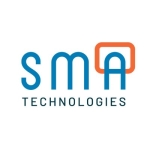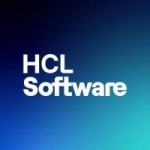We used Automic for a multinational pharmaceutical client.
In the latest version, we can access the solution through a web browser as well.
The web-based edition is missing a lot of the most important features available in Automic, we have absence. For example, when I'm scheduling a job, there is normally a flag that you can toggle to activate and deactivate the task, but that doesn't work properly in the web version. It's missing a lot of the calendar and scheduling features.
My organization used the tool for almost 10 years, but we were dissatisfied when we upgraded to web-based edition because it doesn't provide all the options. It's challenging to create a new job or edit and reconfigure an existing. The web version has to be improved on various levels.
Previously, we were using Solaris with Automic, but now I think it's Unix and Windows. I don't know what version you are going to provide for the cloud. The cloud always supports Unix and Windows, so it means the tool is cloud compatible.
In the web version, everything is moving from the on-premise server to the cloud. So in this scenario, the Automic tool has to be more cloud-oriented. We are not sure how it will work in the cloud. Since 2011 or 2012, we have been using Automic on-prem only. It would be nice to have more documentation about using the cloud version of Automic. The tool could be more user-friendly as well. Most people consider Automic to be a difficult tool to understand and use.
I've been using Automic for six years, but we just switched to another tool called AutoSys six months ago.
Automic is 99 percent stable. We've never had a problem with stability.
The scalability could be improved because we have three kinds of tools on our hardware itself, and we don't know whether Automic will accommodate the other two jobs as well. We have 200 direct users and probably 1,000 who benefit from the tool indirectly.
It depends on the terms of the support contract, but sometimes it will take two or three days to fix an issue. The impact is high because this type of job scheduling solution is used mostly for finance. For example, let's say there are 3,000 jobs scheduled, and four jobs fail. That could mean millions of dollars lost.
It should be fine If they provide support within eight to 16 hours, but they typically take three days to get a response. That won't work because on the impact side. On the other hand, it's highly stable, so we are generally okay, but we still face some bugs every six months or so. When that happens, we expect a speedy response.
The initial setup was straightforward, but it gets complex when you start using it. It will only be complex if you're a new user. The total deployment time for the original and web version was about three months. That includes installation and testing. During the testing, we found missing features, so it took three months to set the solution up, configure it correctly, and test it.
The personnel needed to manage and maintain the solution depends on staffing and scheduling. For example, If you are providing 24-hour support 365 days a year, you need six at the most. We need one person per shift, and we have three eight-hour shifts. Including backups, that's three to six people.
I don't have any numbers about the return handy. We didn't renew the license, and we've already onboarded the other solution and started using it. It's costly and our companies are cutting costs. They consider this an extra cost, so we didn't renew for this year.
The license for Automic is around $7,000 per year, which is somewhat costly, but it includes enterprise support.
I rate Automic Workload Automation eight out of 10.



















